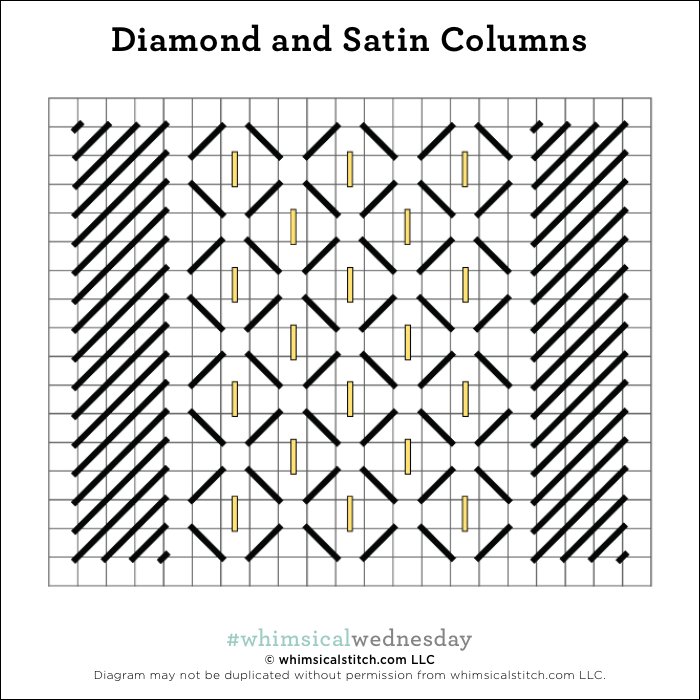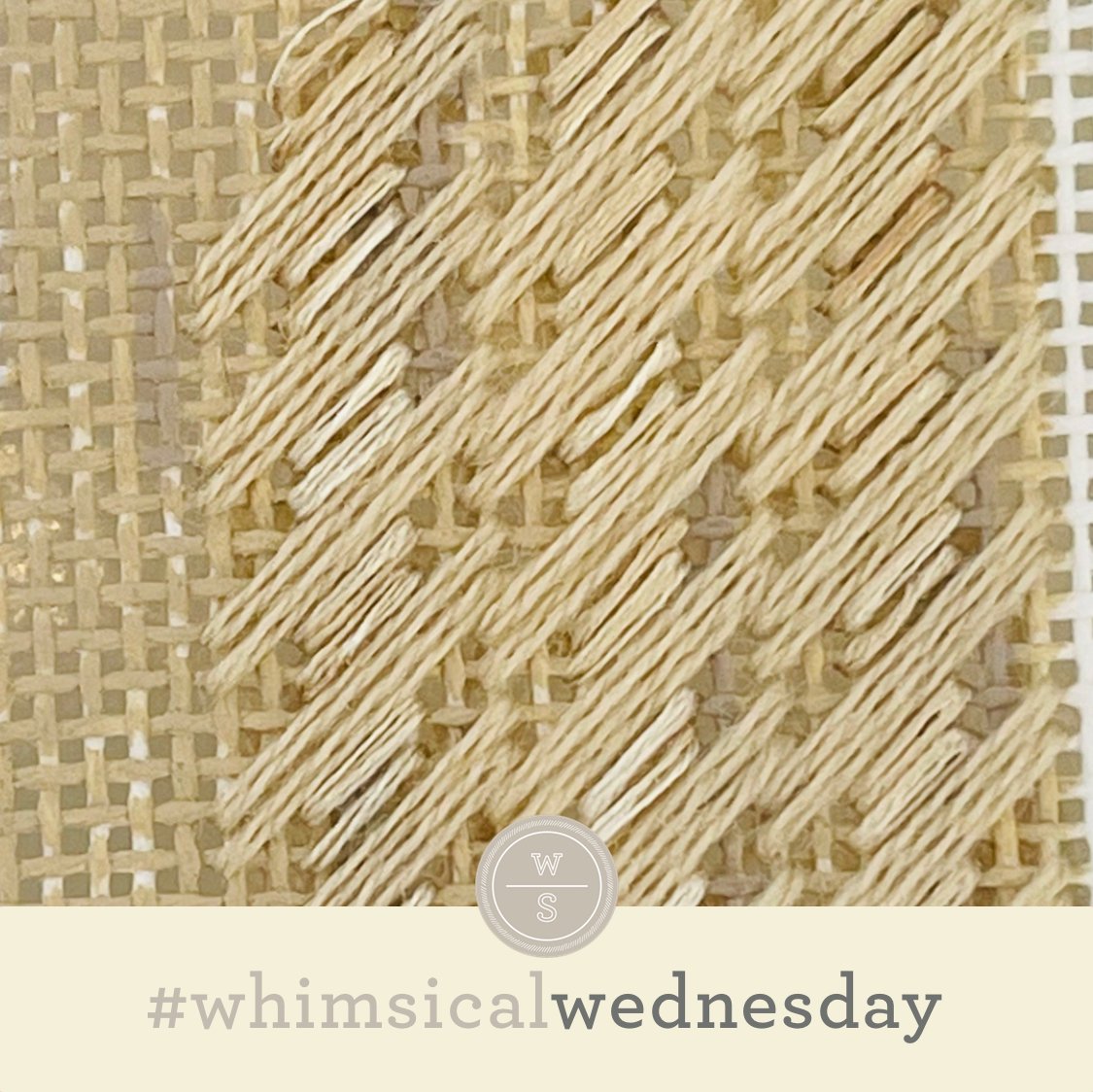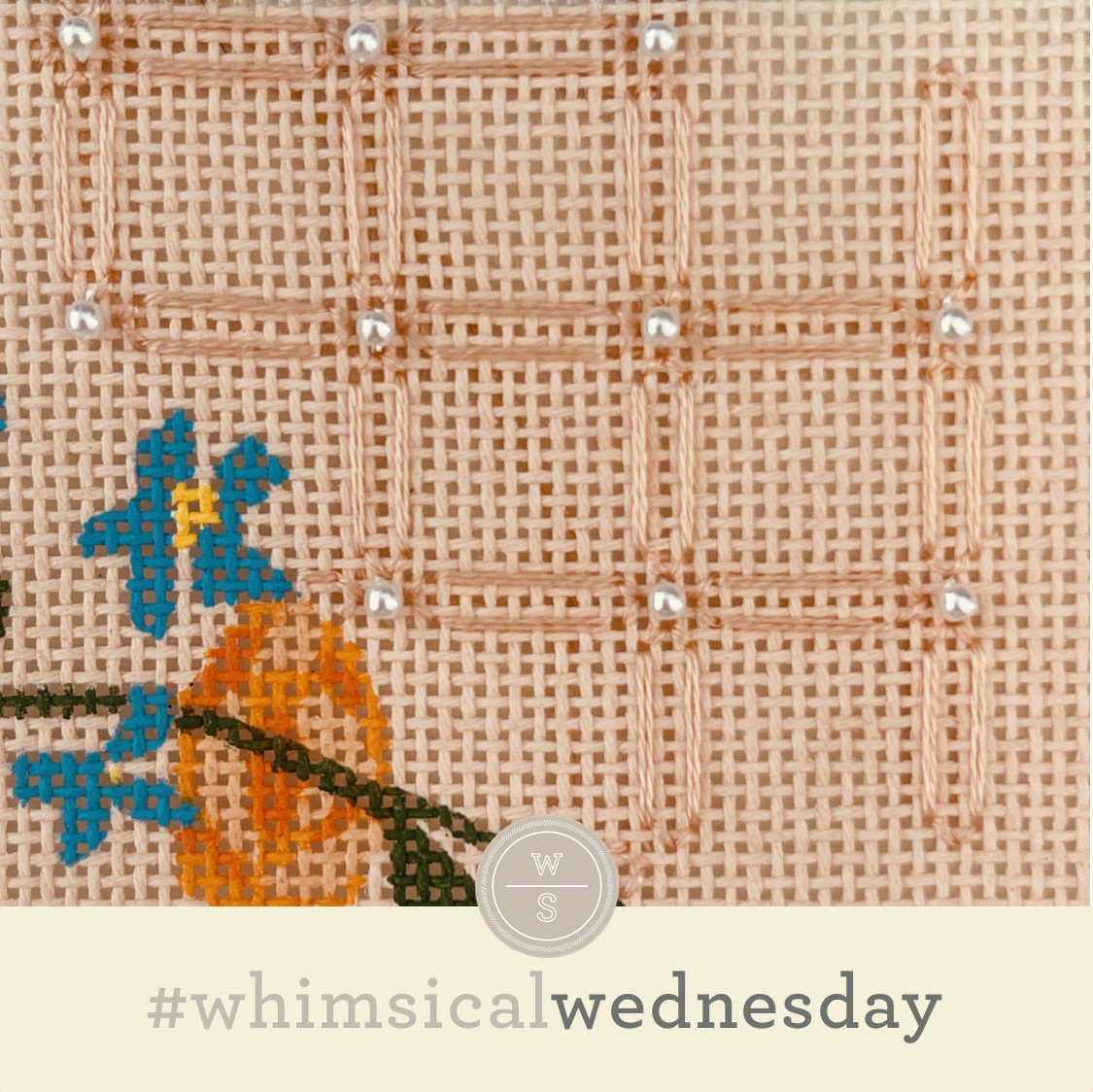Whether you love or loathe candy corn, today’s stitched sample is a piece of candy corn ALL can love!
Truth be told, I was mesmerized by today’s stitch when it traveled through my Instagram feed. It looks like a simple alternating scotch stitch but is much more. The primary elements trails of diagonal scotch (the black lines from the lower left to the upper right). The space between those trails is filled with 3X3 squares (Scotch stitches) and groups of stitches over 1-2-1-2-1 rows. That last element is what, in my opinion, makes this stitch so interesting. Thank you to Hillary (@hifimakes on Instagram) for introducing me to this stitch and for today’s stitched sample.
The stitched sample is a darling candy corn ornament from Burnett and Bradley ornament. Hillary used Silk Lame 18 on 18M for the each of the three panels. (She used the same thread for all of the lines in the diagram as well.)
This interesting full-coverage stitch will work well for tree greenery with an overdyed silk floss. Clothing is another obvious choice. Create a warm sweater or jacket with wool (black lines) and a mild metallic such as Silk Lame (yellow lines). I also suspect it will make an interesting roof on a rustic cottage with two shades of Rainbow Linen.
Just a reminder about how to evaluate stitches for size on your project.
As you are auditioning stitches (from any stitch source), count the number of canvas threads on the diagram that match your mesh size. And there you have what an inch of the stitch will look like. Evaluate that against the area where you plan to use the stitch and make your final decision. If you start integrating this step into your stitch selection process, you may be surprised at how many stitches you think are large are much smaller than you realize. (Or, in today’s case, the stitch is much larger than it looks.)
By (sometimes) including this step in my own process, I find I am now integrating much longer stitches than I ever thought I would. I used to think a stitch six rows long was super big. I have very much changed my tune, which has helped me expand my creativity, especially for large-space stitches.
Today’s stitch diagram, along with all other #whimsicalwednesday and #smallspacesunday stitch diagrams, can also be found on a Pinterest board here. Be sure to follow whimsicalstitch.com on Facebook, Pinterest, Instagram, and Twitter.
If you like what you see on this blog, there's more. Mary’s Whimsical Stitches is a series of three books offering contemporary how-to collections of more than 250 stitches (in each volume) for all stitchers, regardless of skill level. All books include updated and sequenced diagrams from this blog plus a collection of all-new stitches from private lessons and other class projects. Visit here to find a needlepoint retailer that carries my books.
New to needlepoint or looking for a refresher? Please download a handy how-to guide covering basic needlepoint stitches and stitch compensation techniques along with new top-line information on needlepoint materials and tools, how to handle threads, and other helpful needlepoint resources.
whimsicalstitch.com also sells Stitch Guides and Stitch Concepts for Melissa Shirley Designs, Zecca Designs, Sandra Gilmore, Purple Palm, Maggie, and Penny MacLeod, and many more. Click here to see the newest guides and click here to see the entire collection.
I hope you have the perfect spot for this stitch! Please enjoy! Have a wonderful #whimsicalwednesday!
A Note about Diagrams
I use color in diagrams to make them as clear as possible. The primary function of different colored lines is to illustrate a stitch sequence. For example, the layering of colors demonstrates you add them in that order. They can also provide ideas on integrating additional threads (one line for each color). Or, you can use the same thread for all color lines. That's where I encourage you to use your imagination for the space you are stitching!






















